Cuddalore
How to Reach
Air
The nearest International airports is Chennai (200Km ). Another nearest Air Port is in Pondicherry has charter flights located 25KM from Cuddalore. A new airport is also proposed at Neyveli. The work is in progress. Neyveli is in the same district and located 45Km from Cuddalore Town, the headquarters of this district.
Train
The Chennai – Villupuram – Cuddalore – Thanjavoor – Trichy Railways route is available. It runs via Cuddalore Town, the District headquarters. Another major rail route is also available in this District is Chennai -Villupuram – Vridhachalam – Trichy. It is also operational, In which Vridhachalam is located 50KM from Cuddalore Town. There is connecting rail route is also available between Cuddalore and Vridhachalam.
Road
Road transport is very good in Cuddalore District. National highways NH45 , NH45A are running through Cuddalore. Satte Highways 32 & 36 are also running through Cuddalore District. On road Cuddalore is located 200Km From state head quarters.
I Square Taxi in Cuddalore
Cuddalore District is home to a variety of tourist attractions. I Square Taxi offers seamless travel options. We offer One-way Drop Taxi and Round Trip services. We cater to Outstation Taxi, Drop Taxi, and Intercity Taxi trips, perfect for those looking for reliable and convenient transportation.
Cuddalore offers a mix of religious and historical sites that attract visitors from all over. Notable spots include the famous Nataraja Temple and Padaleeswarar Temple. They also include Devanatha Swami Temple and Bhuvaraha Swami Temple. Each temple is rich in history and spirituality.
You might travel for a spiritual retreat. You could embark on a historical exploration. I Square Taxi ensures your journey is comfortable. They offer easy one-way and round-trip taxi options to all these must-visit destinations.
This version promotes I Square Taxi services while highlighting the key tourist sites of Cuddalore. Let me know if you’d like any further revisions!
Tourism with I Square One Way Drop Taxi in Cuddalore
Cuddalore District is rich in history. It dates back to ancient times. I Square Taxi makes it easy to explore its heritage with our One-way Drop Taxi and Round Trip services. We cater to travelers seeking Outstation Taxi, Drop Taxi, or Intercity Taxi. They want a smooth and reliable journey.
The district’s history dates back to 1801. Captain Graham became the first Collector of the area then. It was known as South Arcot after its acquisition from the Nawab. Indian Puranas state that this region was part of Sri Rama Kshetra. The name ‘Arcot’ derives from “Aaru Kadu,” meaning “six forests.” It was believed to be the dwelling place of six sages. Over the years, portions of the district were reallocated, and Cuddalore became a distinct district on September 30, 1993.
With I Square Taxi, you can explore the historic roots and scenic landscapes of Cuddalore at your convenience. It could be a quick one-way trip or a comprehensive round-trip tour.
This version highlights the district’s historical significance while promoting I Square Taxi services. Let me know if you need any further changes!
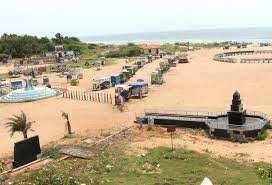
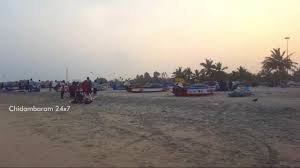
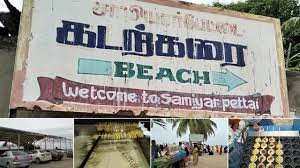
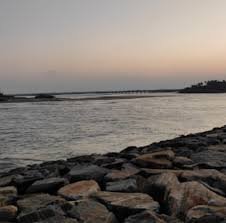
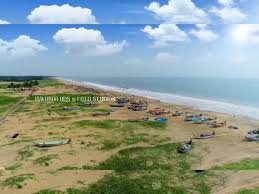
Samiyarpettai is a village on the Indian east coast. It is about 50 kilometres (31 mi) south of Pondicherry. It is also 210 kilometres (130 mi) south of Chennai, located on the Coromandel Coast of the Bay of Bengal. The coastal village of Samiyarpettai, population 1,729, lies midway between Cuddalore and Chidambaram east of Pudhuchattiram in Tamil Nadu, India. It is the largest of the coastal villages in the surrounding. Most of the people here make a living by fishing.
Many other men, like from other coastal villages have moved to other countries to work to make a living. The village is surrounded by coconut trees, with brooks running alongside the village. It also hosts a famous Temple “Shri Pinnai Vazhi Amman Shrine”. Its one of the biggest temple’s alsongside the cuddalore coast. Recently, Samiyarpettai beach is getting crowd’s attention and has become one of the popular holiday spot.


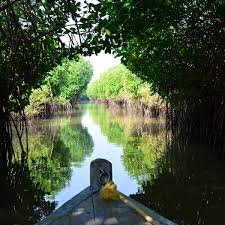
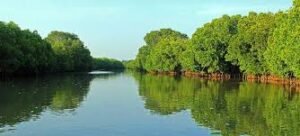
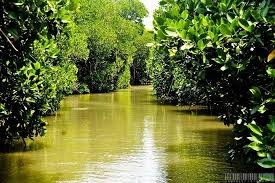
Pichavaramnear Chidambaram in Cuddalore District, Tamil Nadu, in South India. The nearest railway station is Chidambaram from where it is accessible by road. The Pichavaram Mangrove Forest near Chidambaram is the world’s second largest mangrove forest.
Pichavaram mangrove forest is located between two prominent estuaries. It is situated near the Vellar estuary in the north and Coleroon estuary in the south. The Vellar-Coleroon estuarine complex forms the Killai backwater and Pichavaram mangroves. The backwaters connect through the Vellar and Coleroon river systems. They offer abundant opportunities for water sports like rowing, kayaking, and canoeing.
The Pichavaram forest offers waterscape and backwater cruises. It also offers a very rare sight. The mangrove forest trees are permanently rooted in a few feet of water. There are more than 400 water routes available for boating.

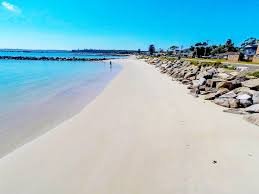
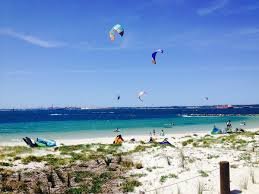
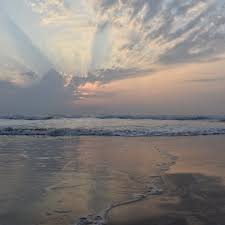
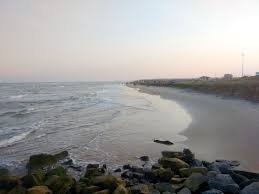
Silver Beach is a beach on the southeast coast of India. It is located 2 km (1.2 mi) from downtown Cuddalore, the headquarters of Cuddalore district in the state of Tamil Nadu. Silver Beach, nonetheless, is untouched by the busy life of the city. It is the second longest beach on the Coromandel Coast and one of the longest beaches in Asia. The 57 km-long stretch of beach faces severe seafront erosion.
There are town buses which ply often between Cuddalore town bus stand and Silver Beach. It is also accessible via Taxis and Autos from different parts of the town. To the south of the beach the South Cuddalore Bay area appears as if it is a separate island.
The backwater separating the main beach from the island-like structure is a safe place for water sports. Boats are not available for rent now as the boat house has been closed. To the west a river flows into dense mangrove forests teeming with birds. On the coast there is century-old lighthouse. A few resorts have sprung up in the area. Most of these are sponsored by the state government for promoting tourism.
Silver Beach is also the location of Fort St. David, which has a long history as one of the three important forts built by the British Empire. An arts college, Periyar College of Arts and Science, is situated near the beach.
There are summer festivals celebrated in Silver Beach yearly during April or May. The beach was struck by the 2004 Asian tsunami. It was the second most heavily affected area, after Nagapattinam, Tamil Nadu. The death toll at Silver Beach was more than 2,700.
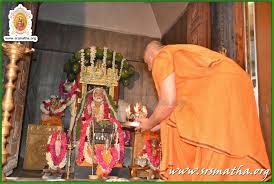


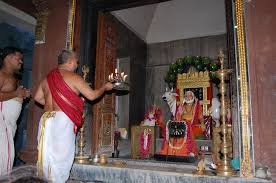

Bhuvanagiri is the birthplace of the saint of South India, Raghavendra Swami.The town is also close to the birthplace of Saint Ramalinga Adigalar (town Maruthur). The word Bhuvanagiri is a combination of two Tamilized-Sanskrit words – Bhuvanam (means World) and Giri (means Mountain or Unmovable).
Hence, the name Bhuvanagiri can mean “the place (world) that does not move”. Bhuvanagiri is internally referred to by the local population as “Mel Bhuvanagiri” (Western Segment) and “Kezh Bhuvanagiri” (Eastern Segment).
Agriculture is the main occupation of more than 3/4 of the town’s population and they depend on it. Rice is the major cultivated crop, followed by Black gram and Green gram. These set of crops are cultivated in a type of land known in Tamil as NanSei (means wetland cultivation).
Other minor crops are grown around this town. The crops include Finger Millet (Ragi in Tamil) and Pearl millet (Kambu in Tamil). They also include Corn (Makkaa cholam in Tamil), Thoor dhal (Thovaram parupu in Tamil), Sesamum (yel in Tamil), and redgram.
These set of crops are cultivated in a type of land known in Tamil as PunSei. A river Vellaru (a tributary of river Cauvery) provides water for irrigation. The town is also known for handloom products (like lungies, hand kerchiefs, saris, dhotis, etc.). It is also known for its Silk saris and Silk Textiles which are referred to as “Bhuvanagiri Pattu”.
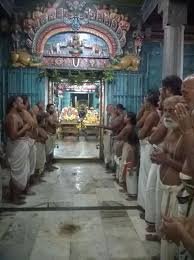
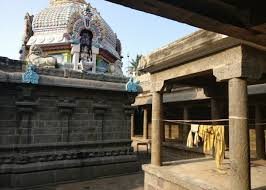
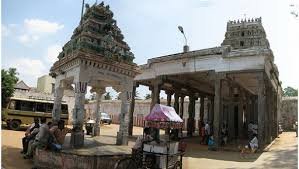

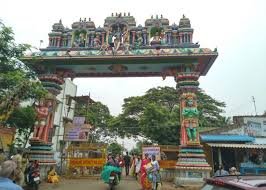
Devanathaswamy temple, also called Thiruvanthipuram Kovil, is in Thiruvanthipuram. This village is on the outskirts of Cuddalore in the South Indian state of Tamil Nadu. The temple is dedicated to the Hindu god Vishnu. The temple is constructed in the Dravidian style of architecture. It is glorified in the Divya Prabandha. This is the early medieval Tamil canon of the Azhwar saints from the 6th–9th centuries AD. It is one of the 108 Divyadesam dedicated to Vishnu. In this temple, Vishnu is worshipped as Devanathaswamy. His consort Lakshmi is worshipped as Hemabhujavalli.
The temple in its current form was built during the Medieval Cholas. Later expansions were carried out by the Pandyas, Hoysala Empire, and Vijayanagara Empire. The temple has fifty inscriptions. These include those from Kulothunga Chola I (1070–1120), Vikrama Chola (1118–1135), and Rajaraja Chola III (1216–1256). There are other inscriptions from Jatavarman Sundara Pandyan (1251–1268). Additionally, inscriptions are from Vikrama Pandya, Vira Pandya III, Vijayanagar king Achyuta Deva Raya (1529–1542 CE), and Koperunjinga.
The Epigraphical Department has found more than 50 inscriptions in the temple belonging to the Medieval Chola period. The inscriptions show grants to the temple from Kulothunga Chola I (1070–1120) and Vikrama Chola (1118–1135). Rajaraja Chola III (1216–1256) also contributed. Other contributors include Jatavarman Sundara Pandyan (1251–1268), Vikrama Pandya, and Vira Pandya III. Additionally, Vijayanagar king Achyuta Deva Raya (1529–1542 CE) and Koperunjinga provided grants.
The Chola country was under siege during the rule of Rajaraja Chola III. Koperunjinga, a Pallava scion, imprisoned him. Vira Narasimha II (1220-1234) came to the rescue of the Chola and ultimately killed the Ceylon king Parakramabahu. A temple tower was erected during the reign of Koperunjinga. The procedures of worship were akin to other temples during the reign of Maravarman Sundara Pandyan.
The descendants of Ramanuja were given special provisions for worship while the period of Vijayanara Empire. In modern times, the temple is maintained by the Hindu Religious and Endowment Board. This board is part of the Government of Tamil Nadu.
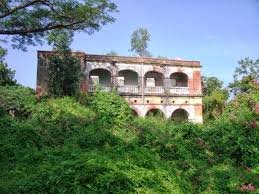
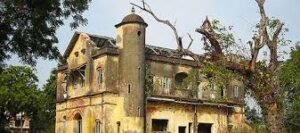
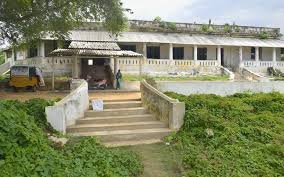
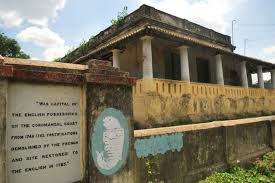
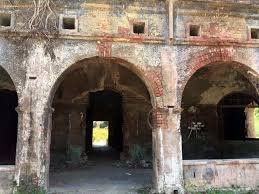
Fort St David is now in ruins. It was a British fort near the town of Cuddalore. It is a hundred miles south of Chennai on the Coromandel Coast of India. It is located near silver beach without any maintenance. It was named for the patron saint of Wales. Elihu Yale, the governor of Madras at the time, was Welsh.
Fort St David, situated on the mouth of River Gadilam, has a memorable history. The region was under the domains of the Nayaks of Gingee. The Dutch in early 17th century wanted to expand their trade in the Bay of Bengal region. They chose the Cuddalore region to take advantage of the local manufacturing of goods. They sought permission from Krishnappa Nayaka of Gingee to build a fort at Devanampatnam. It was granted in 1608, and construction started.
The Nayak withdrew due to pressure from the Portuguese. At that time, they were dominant players at the Coramandal Coast trade. They influenced Gingee’s overlord rulers, Venkata I of Vijayanagara Empire, to prevent Dutch entry. Thus, the fort was left with the Gingee Nayaks under appointed traders. Overseas trade continued. The port became an important source of sandalwood, camphor, cloves, nutmeg, mace, green velvet, porcelain, copper, and brass.
Later when Gingee was occupied by the Marathas, Shivaji’s sonsell the Devanampatnam fort to the highest European bidder. In 1690, the British won by out bidding the Dutch and the French. Elihu Yale, Governor of Madras, acquired the fort after long protracted negotiations. He named it Fort Saint David after a Welsh Saint.
James Macrae had been governor of the fort and in 1725 he became the Governor of the Madras Presidency. From 1725 onwards the British greatly strengthened the fortifications. In 1746 Fort St David became the British headquarters for southern India. The British successfully repulsed attacks by French forces under Dupleix. Robert Clive was appointed its governor in 1756. In 1758, the French captured it. They abandoned it two years later to Sir Eyre Coote, KB.
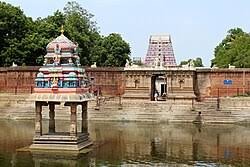
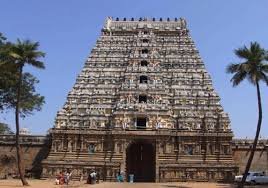
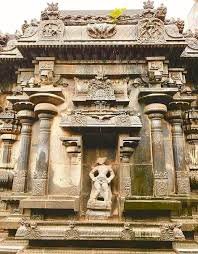
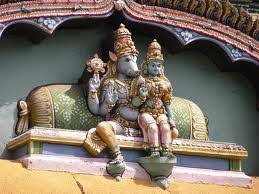
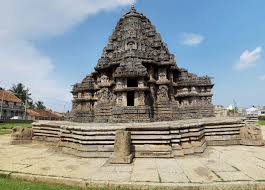
Bhu Varaha Swamy temple is a Hindu temple, located at Srimushnam, in the South Indian state of Tamil Nadu. The temple features Dravidian style architecture. It is dedicated to Varaha (Bhu Varaha Swamy), the boar-avatar of the god Vishnu. His consort Lakshmi is worshiped here as Ambujavalli Thayar.
The temple had contributions from Medieval Cholas of the 10th century with later expansions by Thanjavur Nayak king Achuthappa Nayak. A granite wall surrounds the temple, enclosing all the shrines and the temple tanks. There is a seven-tieredrajagopuram, the temple’s gateway tower.
Six daily rituals and three yearly festivals are held at the temple. The Chariot festival is celebrated during the Tamil month of Vaikasi (April–May). It is the most prominent festival. The festival also symbolises Hindu-Muslim unity in the region. Muslims give the flag of the chariot. They take offerings from the temple and give them to Allah in the mosques. The temple is maintained and administered by the Hindu Religious and Endowment Board of the Government of Tamil Nadu.
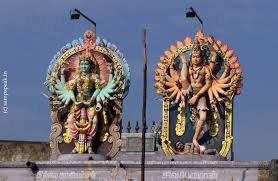


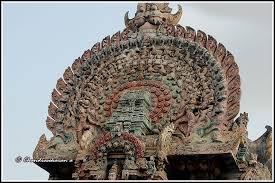
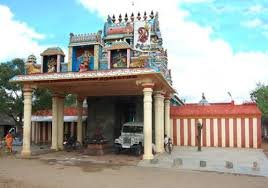
This is a Hindu Temple located on the outskirts of the town of Chidambaram, Cuddalore District Tamil Nadu in India. It was built by Chola King Kopperunjingan who ruled between 1229 and 1278. This Temple is on the outskirts of the city of Chidambaram. Legend says that Goddess Kaali Devi moved here after losing to Lord Siva in the celestial dance contest.
It was an argument that who is superior, either ‘Sivam’ (Lord Siva) or Shakthi (Parvathi). To resolve the argument, they performed a dance program at Chidambaram. It was in front of Lord Vishnu, Lord Brahma, and other deities. While they were playing dance, Lord Siva was about to be defeated.
But knowing fully well Siva played “Oorthuva Taandava” i.e. raising one leg above his head. This “Oorthuva Taandava” is one of the posture in the dance. It could not be played by the women folk due to their modesty and shyness. In this Parvathi could not play equally well to this posture and agreed her defeat. She had to go outside the borders of the town. She needed to contain her haughtiness. She wanted to teach a lesson that Sivam and Shakthi are both equally important in our life.
‘Thillai Kali’ is a deity in anger. This anger was pacified by Brahma by Chanting Veda and also praising her. Because of the penance of Lord Brahma ‘Kali’ became cool. So that Goddess ‘Thillai Amman’ in this temple seems with four faces.
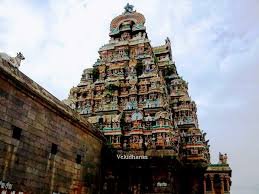
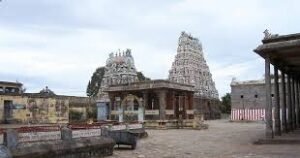


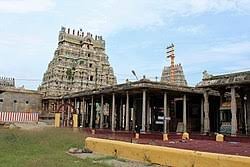
In the remotest past when Brahma thought of creating the earth , he created water. Lord Vishnu happened to cut down the evil Madhukaidavas. The cut pieces of the bodies floated on water created by brahma. On seeing that, Brahma prayed to Lord Shiva. He asked Shiva to create the earth using the hardened compound from the water. He wanted it to be made with the flesh of the bodies. Lord Shiva appeared as a mountain.
Lord Brahma who did not know this created many different mountains. As they did not have space to exist, he was sorrowful. The pranava God appeared and conveyed Brahma the truth through gestures. Brahma worshipped Lord Shiva who was the form of mountain. Shiva created the earth combining the flesh and the water compounded in a hardened form. He called it medhini. He gave space for the mountains of Brahma.
He told Brahma that he was not different from the mountain. The mountains of Brahma came after that mountain. Hence the mountain of Shiva was named Pazha malai(old mountain). According to him, that Pazhamalai would be hard pressed on the earth appearing as Shiva linga above.
Those who worshipped it would get all they wished for. The stone inscriptions have the names of kings. These include Paraanthaga Chola, Kandarathitha Chola, and his wife Chembianmaadevi. Also mentioned are Uthama Chola, Raja Raja Chola, and Rajendira Chola, among others.
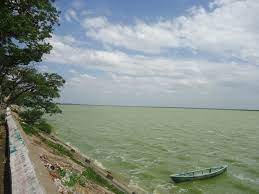
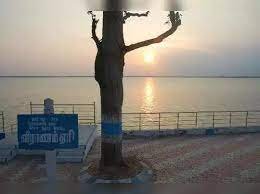
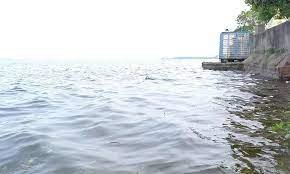

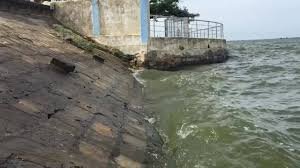
Veeranam Lake : Veeranam Lake (Veeranarayanapuram Lake) is located 14 km (8.7 mi) SSW of Nattarmangalam in Cuddalore district in the state of Tamil Nadu inSouth India. 1 km (0.62 mi) from kattumannarkoil. The lake is located 235 km (146 mi) from Chennai, India. It is one of the water reservoirs. Water is planned to be supplied to Chennai from there.
The lake had run dry, making it impossible to use any water from it. To save face, the authorities decided to dig 45 deep borewells around the area. They pumped the resulting water 235 km (146 mi) to Chennai via the pipeline. As the length is 14 km this is the longest man made lake in the world.
The credit goes to ancient people who have done this job with ordinary hand made tools. Veeranam Lake was built in the Tenth Century during the time of Greater Cholas. from 907–955 AD and is an 16-kilometre (9.9 mi) long dam in northern Tamil Nadu. It was created by Rajaditya Chola. he named it after a title of his father Parantaka I Chola. This veeranam lake gets water fromKollidam via Vadavaru River. The lake remains dry for the major part of the year.
The opening chapter of the book Ponniyin Selvan is set on the banks of the Veera Narayana Lake. Kalki gives an elaborate description of the features of the lake and the way multiple rivers flow into the lake.He added Chola princess KUNDAVI used to come for refreshment at the banks of Veeranam lake during spring season.
He makes a reference to the fact that Ramanujacharya decided on the number of 64 Peetas. This corresponds to the 64 simhasanathipathigal based on the 64 openings in the lake. This is the Veeraanam Lake formerly known as Veeranaaraayanapuram Lake.